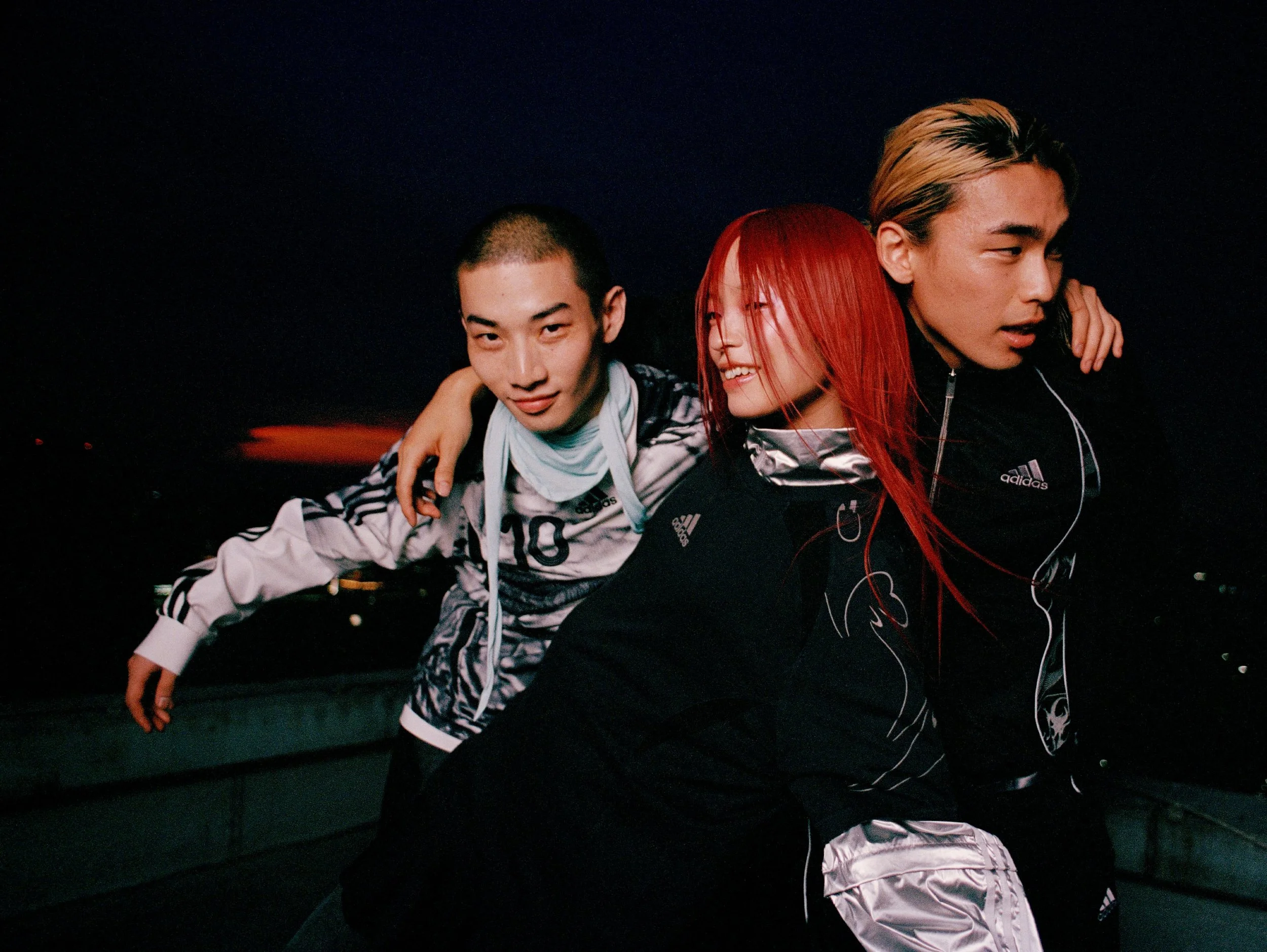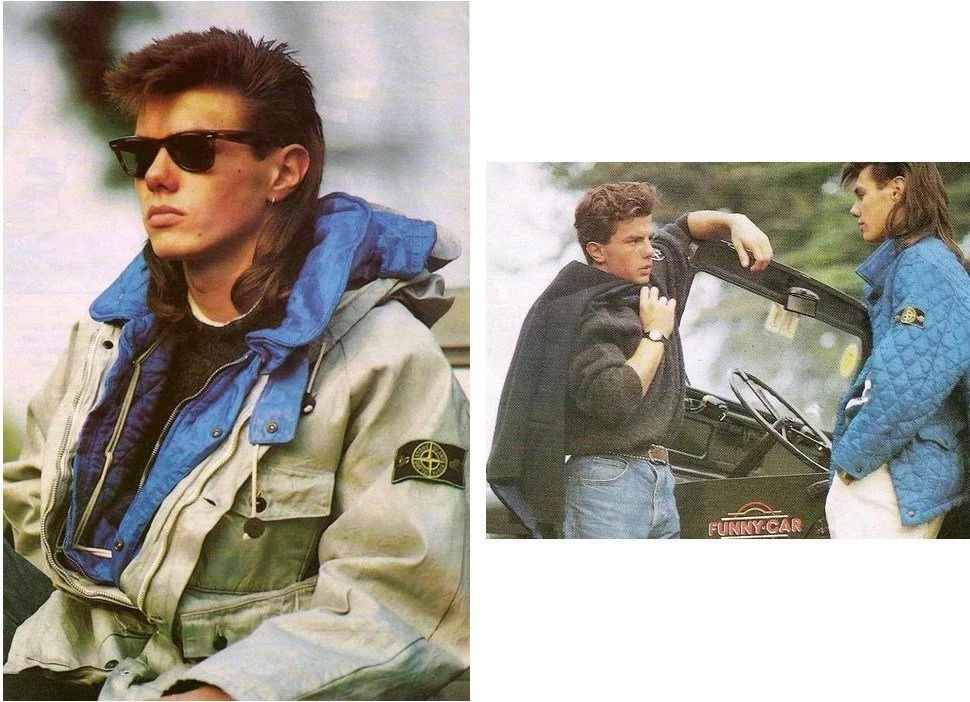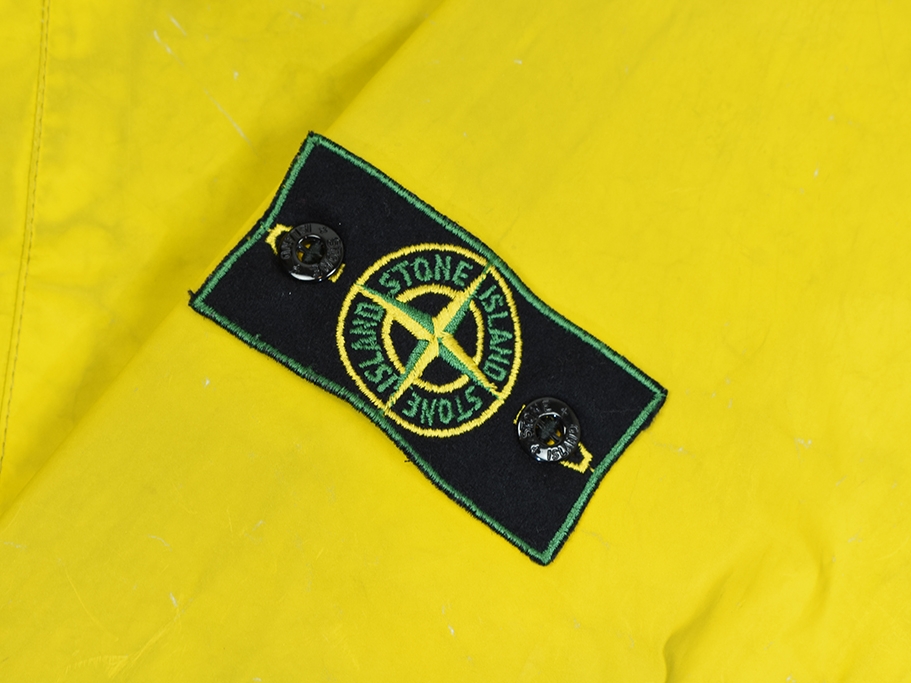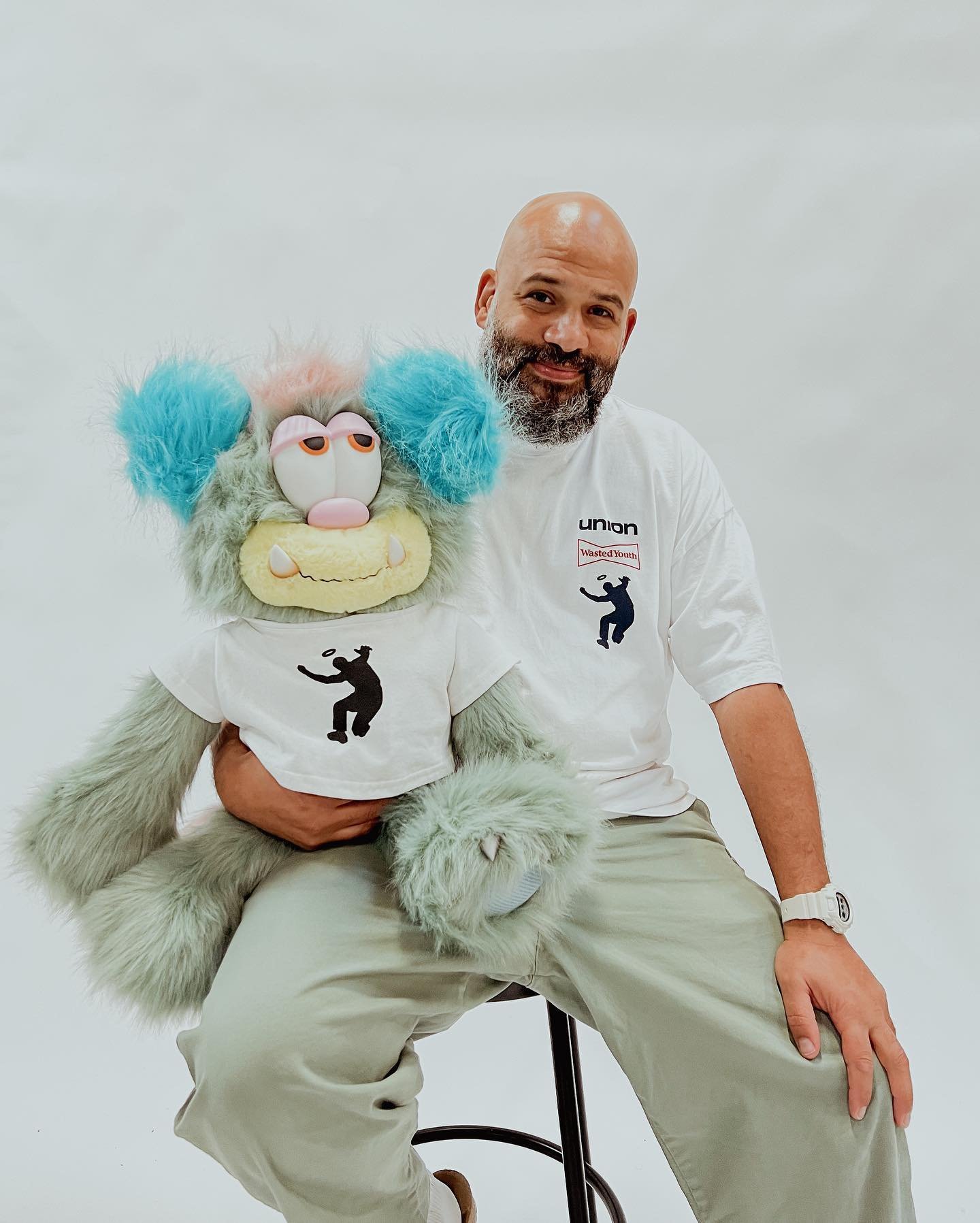From the stadium to the streets: how football culture shaped contemporary style

There’s an age-old sporting adage, used by some to highlight a relentless focus on performance: do your talking on the field. But when it comes to the so-called beautiful game aesthetics, style, and fashion have always been written into the code, both on and off the pitch.
A brief scroll through the social media platform of your choosing and you’ll get the feeling that football has transcended the stadium, taking over the feed without showing any signs of slowing down. Whether it’s #blokecore with its signatories wearing T-toe trainers and ‘getting the badge in’, #blokettecore with its subversive reconstituting of football cues through a feminine lens, or the scroll stopping absurdity of ‘boots only summer’, you’d be forgiven for thinking that football aesthetics aren’t just talking on the pitch, they’re shouting in the streets. Equally, turn your attention to any number of fashion week runways or buzzy streetwear drops, like adidas’ seasonal Y2K infused adilenium collection, and the same applies.









This isn’t, however, a purely contemporary phenomenon. We may be quick to attribute blame (or credit) for football’s stronghold over modern street style to the all-powerful-algorithm. But the real answer lies in the sport’s enduring cross-cultural influence: a story decades in the making, interwoven with tales of subcultural belonging, identity formation, and iconoclastic figures that continue to inspire.
As Griffin Claes, Senior Designer at adidas Football, explains “Football, like fashion is deeply rooted in identity, it tells the world who you are, where you are from, what you value, or that you went to Rome in the summer of ‘07 and caught a vibe with a side of Amatriciana. Whether it’s nostalgia, aesthetics, or heritage, football gives people something real to hold onto, something authentic to wear.”
So in order to understand football’s influence on the trends of today, we must first venture back in time to examine the style tribes, on-pitch aesthetics, and subcultural oeuvres of yesteryear.
Before there were ‘lads’ on TikTok splitting the G in retro jerseys; before Stone Island and C.P. Company became mainstays on moodboards and archive pages; before Sambas were the shoe of the summer…four summers in a row – there were the casuals. It’s only right to begin the story of football’s modern relationship to fashion by tracing it back to the terraces and the English supporters that packed them out in the late 20th century.
Emerging in the country’s North-West, before expanding nationwide, as the story goes: working-class football fans would follow their teams around Europe, bringing back lesser seen designer labels from Italy and France, opting to wear them on the terraces instead of their club’s colours. At once signaling their aspiration and their belonging, the casual look doubled as a way to avoid immediate identification by the authorities when football related violence would occur.
Often seen wearing adidas trainers and brands like Stone Island (inspired by another subculture from Italy, the Paninaro) the casual style was a more carefully curated gesture of fandom than just wearing a jersey – one that involved the right brands and the right look. Much like other bonafide subcultures that pre and post-dated the casuals, membership was earned not assumed, and authenticity came from dedication. This is an important point to note at this juncture, as football-inspired fashion becomes a shortcut to authenticity later in the story.
If the essence of the late 20th century casuals spoke to football’s deep roots in subcultural style, then the turn of the millennium brought with it the sport’s pop-culture explosion courtesy of mass-media driven globalisation. Think: marketing machines turning star players into icons on and off the pitch, Britpop, iconic world cup anthems, and more.
At this juncture it would be amiss to not mention the enduring legacy of the 2002 and 2006 World Cups. The former took place across Japan and South Korea and was the first tournament to be hosted outside of the Americas and Europe. During the tournament, eventual winners, Brazil’s style and flair on the pitch was matched by their infectious energy off of it – their distinct look continuing to influence culture today.
Claes, meanwhile, highlights the undeniable impact of the following tournament during the summer of ‘06 where adidas first introduced its now iconic Teamgeist ball and jerseys worn by the likes of France, Germany, and Japan: “the adidas Teamgeist era is nothing short of legend. I mean, talk about aura, Zidane, Ribery, Cisse, Henry, all on one team, I was glued to the TV. I was mesmerized by the way they played, but also the jersey itself with its fluid cut lines, the bold colour blocking, and a chestbar that must have been 10-15 years ahead of its time, I was hooked. On and off the pitch, this kit was a symbol of the style, angst, and attitude of the early 2000s – now at the epicenter of fashion.”
2006 didn’t just, however, play host to the introduction of era defining looks like Teamgeist, it also foreshadowed the fashion world’s obsession with crossover collaborations that would, in later years, increasingly blur the lines between performance and style.
“The adidas Teamgeist era is nothing short of legend. I mean, talk about aura, Zidane, Ribery, Cisse, Henry, all on one team, I was glued to the TV. I was mesmerized by the way they played, but also the jersey itself with its fluid cut lines, the bold colour blocking, and a chestbar that must have been 10-15 years ahead of its time, I was hooked.
On and off the pitch, this kit was a symbol of the style, angst, and attitude of the early 2000s – now at the epicenter of fashion.”
By this point the legendary Japanese designer Yohji Yamamoto had already been collaborating with adidas under the Y-3 label for a few years, but that summer the trailblazing partnership turned its focus to the pioneering +F50 Tunit boot. Featuring artworks by Yamamoto’s compatriot Taishi Hayashi and arriving in four ‘beast’ inspired editions – Tiger, Dragon, Eagle, and Wolf – the boots broke down the barriers between on pitch performance and avant-garde fashion, setting a precedent that would lay the groundwork for years to come (boots only summer anyone?).
As we chronologically approach our current moment it would be wise to pause and take stock. By the early 2010s football had simultaneously become a universal language and a canvas; a route to belonging and a platform for individual flair. However, it had yet to transcend its own cultural ecosystem in quite the same all-encompassing way that it does today.
That was all about to change. Over the past 15 years, football has staged its full scale pop-culture takeover, ascending to perhaps the most singularly recognisable aesthetic influence of our time.
While football has always been intertwined with music culture (one need look no further than Britpop and this summer’s Oasis reunion for evidence), it would be amiss not to mention Canadian superstar Drake’s role in amplifying football’s on-and-off pitch style codes for the masses in the 2010s. While the artist’s penchant for dipping in and out of subcultures can be debated, he has often leant on football and football-adjacent style to cement his cultural credibility. Whether it was wearing Paul Pogba’s pink Juventus away jersey in 2015, when the maverick player was at the height of his powers, or his love for Stone Island ‘garms’, by adopting football as a style marker Drake borrowed from football’s deeply authentic style codes. And in doing so he affirmed his own cultural chops, while also amplifying elements of football culture far beyond the sport’s direct fanbases.
This was also an era where football infiltrated the fashion world in earnest. Once again, pioneering this crossover was Y-3 – as the label collaborated in 2014 with one of the game’s most legendary clubs, Real Madrid.
“There was never anything like it” says Claes, “the 2014 adidas Yohji Yamamoto Real Madrid kit was the epitome of streetwear intersecting with football. The jersey wasn't just seen as a shirt, it was a canvas. It was hype, it was fashion, it wasn't just a shirt for the game, or a football nerd’s collector’s item (all due respect to the football nerds like myself!), it was a status symbol, and I would have sold my soul for it. To me, it's still the gold standard and as a designer I am still chasing this kit every day.”
This moment, in part, sparked a continued fascination with football culture on the runway. While a number of designers have paraded jerseys and long socks as part of their fashion week collections – Demna Gvasalia’s FW/20 Balenciaga show being perhaps the most influential – it was Grace Wales Bonner’s ongoing collaboration with adidas that brought elements of football inspired style to front rows and instagram explore pages around the world. As the 2010s turned to the 2020s Wales Bonner’s exploration of the Black British and Caribbean experience saw her reimagine the iconic Samba sneaker – itself a silhouette originally created for kicking ball in icy conditions during the mid 20th century – as well as a series of football inspired jerseys. The summer(s) of Samba then followed as a successive number of celebrities and influencers adopted the T-toe look.
It’s not tricky to see, therefore, how we’ve arrived at the current moment. As football and pop-culture continued to cross-polinate in the late 2010s, the acceleration of trends borne out on social media has created the perfect environment for the sport’s aesthetics to blossom far beyond the pitch. Hashtags like blokecore and blokettecore, while derided by some for lacking authentic connection or acknowledgement of their working class roots, have seen elements of football style remixed for the TikTok generation – borrowing T-toe adidas silhouettes from casual culture and jerseys from the Y2K era to create categorizable and coinable looks.
Festival fashion meanwhile has emerged as a mainstay on moodboards the world over. Wearing a deep-cut retro jersey at Glastonbury, Coachella, or Rainbow Disco Club, has become a way to connect with fellow revelers – like the casuals before them, partyers wearing a lesser known vintage kit at once stand out in the summer crowd and offer a subtle nod of belonging to those who ‘get the reference’.
Most recently, #bootsonlysummer has set the algorithm alight as on pitch gear has been playfully and absurdly subverted for maximum viral potential – and brands like adidas have got in on the act quickly dropping imagery and early samples of their upcoming F50 Adiframe sneaker, built for the street. While critics have been quick to point out the impracticality of wearing studded boots in a lifestyle context, it’s important to note that the story of football-style permeating into the popular psyche is littered with examples, like the Samba, of performance gear being reimagined for altogether new purposes.
So what might the future hold? With the Women’s Euros and Women’s African Cup of Nations having punctuated yet another summer of football and with a Men’s World Cup around the corner in 2026, for Claes, football’s seemingly limitless cultural energy is set to continue its cross-cultural dominance:
“You can see it in the streets, with F50s being the shoe of Paris Fashion Week and football kits headlining every festival. Football is having a moment without a doubt, but Football isn’t a trend.
Football will continue to impact street style as it always has – at the crossroads of sport and culture, nostalgia and now.
The sport will always be an infinitely deep rabbit hole where people can get really niche – where you find yourself at 3 a.m. scouring the internet for a 2002 Reggina Nakamura jersey. And I feel honored to be able to add to the lore.”
Whether it’s the game continuing to permeate culture through artefacts like Paolo Sorrentino’s 2024 love letter to Napoli (and football), Parthenope, or algorithmic driven trends bending preconceived notions of what football can and should look like, the mythos of the game promises to undulate even further.
As a new generation of style conscious fans decouple references from their historical tethers, football’s signature aesthetics are bound to become even more experimental. Think remixed jerseys like adidas’ latest adilenium collection, reconstituted silhouettes that bring the codes of the game into new realms as seen in the work of designer Conner Ives, or subtle nods to casual style interwoven with modern references.








Ultimately if one thing’s for certain, it’s that even as trends fade in and out of relevance, the aesthetic voice of the beautiful game will continue to be heard – from the stands to the streets – for years to come.
Words by Josh Proctor
Special Thanks to Griffin Claes
Editorial Credits:
Photographer: Pierre Boissel
Art Director: Lara Damiens
DP: Andrew Smith
Video Director: Mathias Ponard & Pierre Boissel
Photo Assistant: Eisaku Kubo
Stylist: Ginya Tabata
Styling Assistant: Yuto Inada
Lighting Technician: Kaku
Lighting Assistant: Yuyan Li
Hair Stylist: Aya Kuraoka
Hair Assistant: Asuka Ito
Make-up Artist: Tamayo Yamamoto
Make-up Assistant: Misaki Oka
Executive Producer: Natsuki Ludwig
Producer: Ryosuke Oki
Producer: Mayu Uchida
Production Assistant: Tatsuki
Production Assistant: Effy Zhang
Music,Sound Design and Mix: Cheng Zhuang @chengsso
Video Editing: Bruce Mangeard @brucemangeard
Video Color Grading: Eudes Quittelier @eudesquittelier
Video Post Production: Tyssage Studio @tyssage
Cast: Natsumi Sekine
Cast: Ryuhei Chishima
Cast: Coldie
adidas Japan: Gabriel Salmon
adidas Japan: Akihiro Fujisaki
















